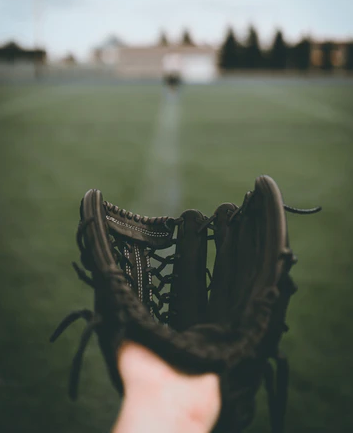Choosing The Right Shoes For Team Sports- Part Two

In our previous post, we talked about the different soles and treads found on specialty sports shoes. While these are important, the upper portion also plays a significant role in how well your shoes improve your athletic performance. All shoes are made from different materials that can help make them more effective at their particular uses.
Upper
To put it simply, the upper portion of the shoe is the part that will make contact with the ball, if you're kicking it. There is a large variety of both natural and synthetic types of leather that you can choose from. Although both will offer a wide range of durability and feel, the vital thing to keep in mind is the softer the leather, the better the touch. However, something to consider is the softest touch, the best feel, often means they offer less durability. Another factor is the retention of water. Many of the softest natural leathers tend to absorb water when playing on a wet field.
There is a multitude of treatments, or coatings, that you can use on the upper. They have been designed to offer friction control, prevent water retention, or create a swerve on a well-placed kick. Here are some of the most popular types of material you can find on specialty shoes.
Kangaroo Leather
Leather made from Kangaroo is a very soft material that will stretch and mold itself to your foot. It is the most expensive material around and will, therefore, result in a more expensive shoe. It's very high quality as well as lightweight. These are probably the most comfortable soccer shoes ever made; however, you will have to sacrifice some durability. Shoes made from Kangaroo leather won't last for very long. Many companies heavily relied on this type of leather to make the premium, most sought after shoes. If you want the ultimate cleat that will mold to your foot, and if you can afford the price, then kangaroo leather is what you are looking for.
Natural Leather
As the name implies, these are all-natural leathers made from goats or calfskin. These have been widely used on the majority of top-level soccer shoes. As of late, these are the only natural leathers most shoe companies seem to use. It offers you a unique feel when connecting with the ball.
Synthetic Leather
This is the option most companies seem to be using. More and more, the top-rated companies seem to be working hard to create high-end synthetic leathers. The goal is to imitate the qualities everyone loves about natural leather while adding extra touches, such as waterproofing. Although there is a bit of natural loss when it comes to the ball's feel, improved materials are continually being developed, bringing companies closer to an almost perfect performance match.
Synthetic
This material offers an entirely different type of experience than leather. Using much thinner materials, synthetic soccer shoes actually give most players a slightly larger fit after the first use. There isn't much stretch to the material, so this is something to keep in mind when trying them on for the first time.
Mesh
You've seen this material used in running shoes. It's very thin, and it gives the cleat an extra light feel. Something to consider is that this allows considerably more moisture near your foot and can leave you with wet feet. Several companies attempt to override this setback by using technology that will leave this material lightweight yet waterproof.
Full-Grain/Calfskin
Calfskin is leather; however, it is much heavier than and nowhere near as supple as kangaroo leather. That being said, you will find it's much more durable, and sports shoes made of calfskin are tough and are in the middle of the varying price range.
- Tags: activity
- Memphis, TN.
Comments 0